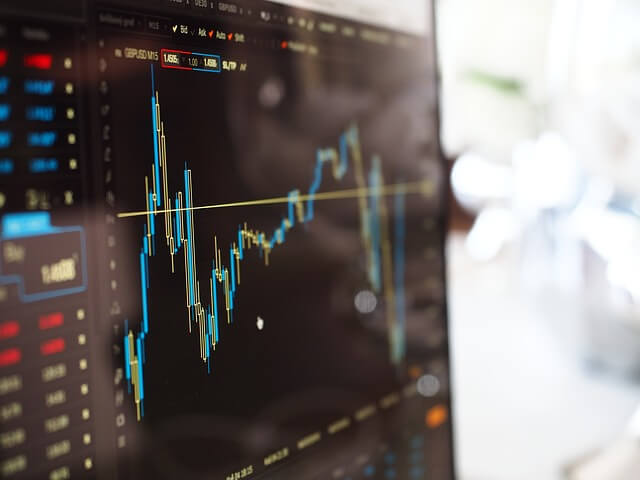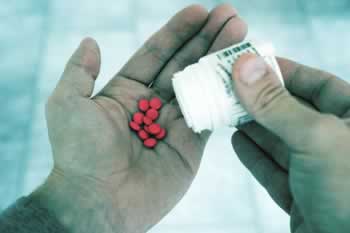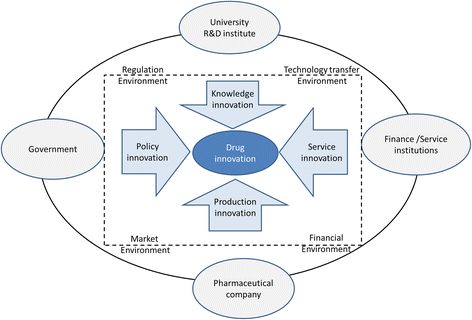Introduction
In today’s globalized world, the pharmaceutical industry faces unprecedented challenges and opportunities in distributing its products across international markets. As healthcare needs continue to evolve and expand worldwide, pharmaceutical companies must navigate a complex web of regulations, supply chain intricacies, and market-specific demands to ensure their life-saving medications reach patients efficiently and safely.
This comprehensive article delves into the multifaceted challenges of pharmaceutical distribution in international markets and explores innovative strategies to overcome these hurdles. We’ll examine the current state of the global pharmaceutical market, dissect the distribution process, and highlight the major obstacles faced by industry players. More importantly, we’ll discuss cutting-edge solutions and emerging trends that are reshaping the landscape of international pharmaceutical distribution.
Whether you’re a pharmaceutical executive, a supply chain manager, or a healthcare professional, this article will provide valuable insights to help you navigate the complexities of global drug distribution and stay ahead in this dynamic industry.
Understanding the Global Pharmaceutical Market
Market Size and Growth
The global pharmaceutical market is a behemoth, with its size and influence continuing to expand year after year. According to recent data, the global pharmaceutical market was valued at approximately $1.27 trillion in 2020 and is projected to reach $1.70 trillion by 2025, growing at a compound annual growth rate (CAGR) of 7.3%[1].
This remarkable growth is driven by several factors, including:
- Aging populations in developed countries
- Increasing prevalence of chronic diseases
- Advancements in biotechnology and personalized medicine
- Expanding access to healthcare in emerging markets
- The ongoing global response to the COVID-19 pandemic
Key Players and Regions
The pharmaceutical industry is dominated by a handful of multinational corporations, often referred to as “Big Pharma.” These companies, such as Pfizer, Johnson & Johnson, Roche, and Novartis, command significant market share and have extensive global distribution networks.
However, the landscape is evolving, with emerging players from countries like India and China gaining ground, particularly in the generics market. These new entrants are challenging the status quo and forcing established companies to rethink their distribution strategies.
In terms of regional markets, North America, particularly the United States, remains the largest pharmaceutical market globally, followed by Europe and Asia-Pacific. However, emerging markets in Latin America, Africa, and Southeast Asia are experiencing rapid growth, presenting both opportunities and challenges for pharmaceutical distribution.
“The pharmaceutical industry is at a crossroads. While developed markets are reaching saturation, emerging markets offer tremendous growth potential. The key to success lies in developing robust, flexible distribution strategies that can adapt to diverse regulatory environments and market conditions.” – Dr. Sarah Thompson, Global Health Policy Expert at Harvard University
The Pharmaceutical Distribution Process
Understanding the intricacies of the pharmaceutical distribution process is crucial for addressing its challenges effectively. Let’s break down the main stages:
Manufacturing
The journey begins with the manufacturing of pharmaceutical products. This process involves:
- Research and development of new drugs
- Clinical trials and regulatory approval
- Large-scale production of approved medications
- Quality control and assurance
Manufacturers must adhere to strict Good Manufacturing Practices (GMP) and ensure their facilities meet international standards.
Wholesaling
Once manufactured, drugs typically pass through wholesalers before reaching pharmacies or healthcare providers. Wholesalers play a critical role by:
- Purchasing large quantities of medications from manufacturers
- Storing and managing inventory
- Distributing products to pharmacies, hospitals, and other healthcare facilities
- Providing value-added services such as repackaging and data analytics
Retailing
The final stage of distribution involves retailers, primarily pharmacies, who dispense medications directly to patients. This stage includes:
- Community pharmacies
- Hospital pharmacies
- Mail-order pharmacies
- Online pharmacies (where legally permitted)
Retailers must comply with local regulations, manage inventory, and ensure proper storage and handling of medications.
Major Challenges in International Pharmaceutical Distribution
Distributing pharmaceuticals across international markets presents a unique set of challenges. Let’s explore the most significant hurdles faced by the industry:
Regulatory Compliance
One of the most complex aspects of international pharmaceutical distribution is navigating the diverse regulatory landscape across different countries and regions.
Key challenges include:
- Varying approval processes for new drugs
- Different labeling and packaging requirements
- Pharmacovigilance and post-market surveillance obligations
- Import/export regulations and customs procedures
For example, while the FDA regulates pharmaceuticals in the United States, the European Medicines Agency (EMA) oversees drug approvals in the European Union. Each country may have additional requirements, making compliance a daunting task for global pharmaceutical companies.
Supply Chain Complexity
The pharmaceutical supply chain is intricate, involving multiple stakeholders and touchpoints. This complexity is amplified in international distribution.
Major challenges include:
- Coordinating with numerous suppliers, manufacturers, and distributors
- Managing inventory across different markets with varying demand patterns
- Ensuring product traceability throughout the supply chain
- Dealing with language barriers and cultural differences
Counterfeit Drugs
The proliferation of counterfeit drugs is a significant threat to public health and a major challenge for pharmaceutical companies operating internationally.
The World Health Organization estimates that counterfeit medicines could account for up to 10% of all pharmaceuticals worldwide[2].
Counterfeit drugs not only pose serious health risks to patients but also result in significant financial losses for legitimate pharmaceutical companies.
Temperature Control
Many pharmaceutical products, particularly biologics and vaccines, require strict temperature control throughout the distribution process. This challenge, known as cold chain management, is particularly acute in international distribution.
Key issues include:
- Maintaining consistent temperatures during long-distance transportation
- Ensuring proper storage facilities in diverse climatic conditions
- Monitoring temperature throughout the supply chain
- Managing costs associated with specialized packaging and transportation
Pricing and Reimbursement
Pricing strategies and reimbursement policies vary significantly across different countries, presenting a major challenge for pharmaceutical companies.
Factors contributing to this challenge include:
- Government price controls in many countries
- Varying healthcare systems and insurance coverage
- Parallel trade within regions like the European Union
- Balancing affordability in low-income countries with profitability
“The pharmaceutical industry must walk a tightrope between ensuring access to essential medicines in developing countries and maintaining the financial incentives necessary for continued innovation.” – Dr. Maria Rodriguez, Health Economics Professor at London School of Economics
Strategies for Overcoming Distribution Challenges
While the challenges of international pharmaceutical distribution are significant, innovative strategies and technologies are emerging to address these issues. Let’s explore some effective approaches:
Leveraging Technology
Technology plays a crucial role in streamlining pharmaceutical distribution and addressing many of the challenges we’ve discussed.
Key technological solutions include:
- Enterprise Resource Planning (ERP) systems: These integrated software solutions help manage various aspects of the distribution process, from inventory control to order processing and financial management.
- Internet of Things (IoT) devices: Sensors and smart devices can monitor environmental conditions, track shipments in real-time, and provide valuable data for optimizing the supply chain.
- Artificial Intelligence (AI) and Machine Learning (ML): These technologies can analyze vast amounts of data to predict demand, optimize inventory levels, and identify potential supply chain disruptions before they occur.
- Cloud computing: Cloud-based solutions enable better collaboration among stakeholders and provide real-time visibility into the distribution process.
Partnering with Local Distributors
Collaborating with local distributors can help pharmaceutical companies navigate the complexities of different markets more effectively.
Benefits of local partnerships include:
- In-depth knowledge of local regulations and market conditions
- Established relationships with healthcare providers and pharmacies
- Existing distribution infrastructure and networks
- Cultural understanding and language proficiency
For example, when Pfizer entered the Chinese market, it partnered with Shanghai Pharmaceuticals, one of China’s largest distributors, to leverage their local expertise and distribution network[3].
Implementing Track-and-Trace Systems
To combat counterfeit drugs and improve supply chain visibility, many pharmaceutical companies are implementing sophisticated track-and-trace systems.
These systems typically involve:
- Unique serialization of individual drug packages
- Barcode or RFID technology for easy scanning and tracking
- Centralized databases to store and manage product information
- Integration with regulatory systems for compliance reporting
The EU’s Falsified Medicines Directive and the U.S. Drug Supply Chain Security Act are driving the adoption of these systems globally.
Improving Cold Chain Management
Effective cold chain management is crucial for maintaining the quality and efficacy of temperature-sensitive pharmaceuticals.
Strategies for improving cold chain management include:
- Investing in advanced temperature-controlled packaging solutions
- Utilizing real-time temperature monitoring devices
- Implementing robust contingency plans for potential disruptions
- Training staff in proper handling procedures for temperature-sensitive products
Adopting Flexible Pricing Strategies
To address the challenges of pricing and reimbursement across different markets, pharmaceutical companies are adopting more flexible pricing strategies.
These may include:
- Tiered pricing based on a country’s economic status
- Value-based pricing tied to health outcomes
- Risk-sharing agreements with payers
- Differential branding and packaging for different markets
For instance, Gilead Sciences implemented a tiered pricing strategy for its hepatitis C drug, Sovaldi, offering significantly lower prices in low-income countries while maintaining higher prices in developed markets[4].
The Role of Data Analytics in Pharmaceutical Distribution
Data analytics has emerged as a game-changer in addressing the challenges of pharmaceutical distribution. By harnessing the power of big data, companies can gain valuable insights to optimize their distribution strategies.
Key applications of data analytics include:
- Demand forecasting: Advanced analytics can predict demand patterns more accurately, helping companies optimize inventory levels and reduce waste.
- Route optimization: Data-driven algorithms can determine the most efficient transportation routes, reducing costs and delivery times.
- Risk assessment: Analytics can identify potential risks in the supply chain, allowing companies to implement proactive mitigation strategies.
- Performance monitoring: Real-time analytics dashboards enable continuous monitoring of key performance indicators across the distribution network.
- Customer insights: Analysis of sales and prescription data can provide valuable insights into customer behavior and market trends.
“In the era of big data, pharmaceutical companies that effectively leverage analytics will have a significant competitive advantage in navigating the complexities of global distribution.” – John Smith, Chief Data Officer at PharmaTech Solutions
Emerging Trends in International Pharmaceutical Distribution
The pharmaceutical distribution landscape is continuously evolving. Here are some emerging trends that are shaping the future of the industry:
Direct-to-Pharmacy Models
Some pharmaceutical companies are exploring direct-to-pharmacy (DTP) distribution models, bypassing traditional wholesalers.
Benefits of DTP models include:
- Greater control over the supply chain
- Improved visibility into end-user demand
- Potential for cost savings
- Enhanced ability to ensure product authenticity
However, implementing DTP models can be challenging, particularly in markets with established wholesaler networks.
E-commerce and Online Pharmacies
The rise of e-commerce is transforming pharmaceutical distribution, with online pharmacies gaining traction in many markets.
Key considerations for this trend include:
- Regulatory challenges surrounding online drug sales
- Need for robust verification systems to ensure patient safety
- Opportunities for improved access to medications, particularly in remote areas
- Potential disruption to traditional pharmacy business models
Blockchain Technology
Blockchain technology holds significant promise for addressing many of the challenges in pharmaceutical distribution.
Potential applications include:
- Enhancing supply chain transparency and traceability
- Combating counterfeit drugs through immutable record-keeping
- Streamlining regulatory compliance and reporting
- Facilitating secure data sharing among stakeholders
While still in its early stages, blockchain adoption in pharmaceutical distribution is gaining momentum, with several pilot projects underway.
Case Studies: Successful International Distribution Strategies
Let’s examine two case studies that illustrate successful strategies for overcoming international distribution challenges:
Case Study 1: Novo Nordisk’s Approach to Emerging Markets
Novo Nordisk, a Danish pharmaceutical company specializing in diabetes care, has successfully expanded its presence in emerging markets through innovative distribution strategies.
Key elements of their approach:
- Local manufacturing: Establishing production facilities in key markets like China and Brazil to reduce costs and improve supply chain efficiency.
- Tiered pricing: Implementing differential pricing strategies to balance affordability and profitability across diverse markets.
- Partnerships: Collaborating with local healthcare providers and NGOs to improve diabetes awareness and care in developing countries.
- Digital solutions: Leveraging mobile apps and telemedicine to enhance patient support and medication adherence.
Results: Novo Nordisk has significantly increased its market share in emerging economies while improving access to diabetes care for millions of patients[5].
Case Study 2: GlaxoSmithKline’s Supply Chain Transformation
GlaxoSmithKline (GSK) undertook a major supply chain transformation to address the challenges of global distribution.
Key initiatives included:
- End-to-end visibility: Implementing a global ERP system to provide real-time visibility across the entire supply chain.
- Demand-driven supply chain: Adopting advanced analytics for more accurate demand forecasting and inventory optimization.
- Supplier integration: Collaborating closely with suppliers to improve quality control and reduce lead times.
- Sustainability focus: Incorporating environmental considerations into distribution strategies, including reducing carbon emissions in transportation.
Results: GSK achieved significant improvements in supply chain efficiency, reducing inventory levels by 25% and improving on-time delivery performance to over 95%[6].
Future Outlook for Pharmaceutical Distribution
As we look to the future, several trends are likely to shape the landscape of international pharmaceutical distribution:
- Increased digitalization: The adoption of digital technologies, from AI-driven analytics to blockchain-based traceability systems, will continue to accelerate.
- Personalized medicine: The growth of personalized and precision medicine will require more agile and responsive distribution systems.
- Sustainability focus: Environmental considerations will play an increasingly important role in distribution strategies, driven by both regulatory pressures and consumer expectations.
- Emerging market growth: Developing economies will continue to gain importance, necessitating tailored distribution approaches for these markets.
- Regulatory harmonization: Efforts to harmonize pharmaceutical regulations across regions may help simplify international distribution, although progress is likely to be gradual.
Conclusion
The challenges of pharmaceutical distribution in international markets are multifaceted and complex. From navigating diverse regulatory landscapes to ensuring product integrity across global supply chains, pharmaceutical companies face numerous hurdles in their quest to deliver life-saving medications to patients worldwide.
However, as we’ve explored in this article, innovative strategies and emerging technologies offer promising solutions to these challenges. By leveraging data analytics, embracing digital transformation, forging strategic partnerships, and adopting flexible approaches to pricing and distribution, pharmaceutical companies can overcome these obstacles and improve their global reach.
The future of international pharmaceutical distribution lies in creating agile, transparent, and patient-centric supply chains that can adapt to the evolving needs of a global healthcare landscape. Companies that can successfully navigate these challenges will not only drive their own growth but also play a crucial role in improving healthcare outcomes for patients around the world.
Key Takeaways
- The global pharmaceutical market is growing rapidly, presenting both opportunities and challenges for international distribution.
- Major challenges include regulatory compliance, supply chain complexity, counterfeit drugs, temperature control, and pricing disparities.
- Leveraging technology, partnering with local distributors, implementing track-and-trace systems, and improving cold chain management are key strategies for overcoming distribution challenges.
- Data analytics plays a crucial role in optimizing distribution strategies and improving supply chain efficiency.
- Emerging trends such as direct-to-pharmacy models, e-commerce, and blockchain technology are reshaping the pharmaceutical distribution landscape.
- Successful
Citations:
[1] https://www.advotics.com/3-pharmaceutical-distribution-challenges/
[2] https://www.abiresearch.com/blogs/2023/02/17/pharma-supply-chain-challenges/
[3] https://www.parkoursc.com/6-common-challenges-in-the-pharmaceutical-supply-chain-and-how-to-overcome-them/
[4] https://medpak.com/pharmaceutical-supply-chain-management/
[5] https://www.ncbi.nlm.nih.gov/pmc/articles/PMC6706717/
[6] https://www.mckinsey.com/capabilities/operations/our-insights/emerging-from-disruption-the-future-of-pharma-operations-strategy
[7] https://www.supplychainbrain.com/articles/34798-five-critical-challenges-facing-pharma-supply-chains
[8] https://xcelpros.com/challenges-of-pharmaceutical-supply-chain/






















